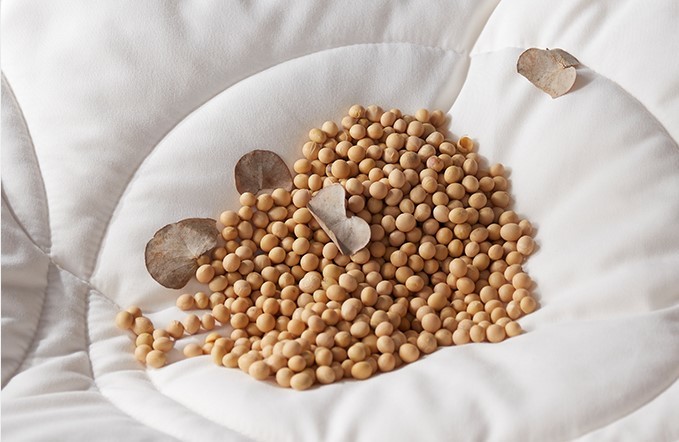The manufacture of soybean fiber dates back to the 1930s and 40s. In 1938 Ford wore a soybean-blended necktie, which was said to be his favorite 75th birthday present. In that year, a pilot plant for soybean “wool” was built with the capacity to produce 1,000 pounds per day. Shortly thereafter, a blended fabric made of 25% soybean “wool” and 75% sheep’s wool was used as the sidewall upholstery in many Ford cars.
Soybean fiber is a sustainable textile fiber made from renewable natural resources. It is actually made from the byproduct leftovers of soybean oil/tofu/soymilk production, which would normally be discarded. The production of this fiber is an effort to move textile production away from petrochemical textile products, and to turn waste into useful products. The byproducts of soybean production can be used as fodder or fertilizer. All secondary products used in the production of soybean fiber are harmless and are recyclable.

Fabrics made from soy fiber are eco-friendly, and are so soft that some people call it “vegetable cashmere‘’ with the following characteristics.
Stronger tensile strength than wool, and has almost the same warmth retention as wool
Soft and drapeable—feels like cashmere
Can be spun into a variety of yarn weights
Takes dyes very well
Same moisture absorption as cotton, but with better moisture transmission than cotton
Comfortable to wear
MAJOR END USES:
Apparel – childrens clothes, T-shirts, travel apparel/casual sportswear
Bedding – bed sheets, quilt, pillow, blanket
Other – automotive foams, films, packaging
Learn more: http://www.springtextile.com Or Spring Hometextile video channel: www.youtube.com/channel/UCMCz-yKQMYxA1e2Uscw5PHw Also can contact Tina at: [email protected]
